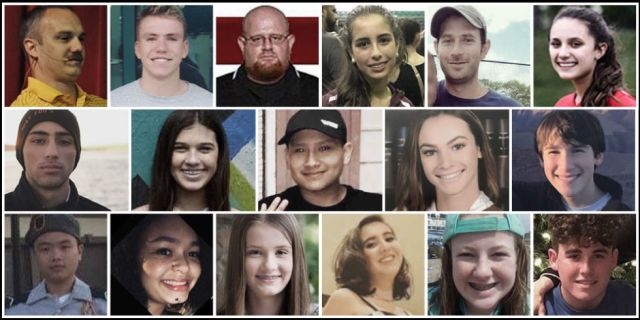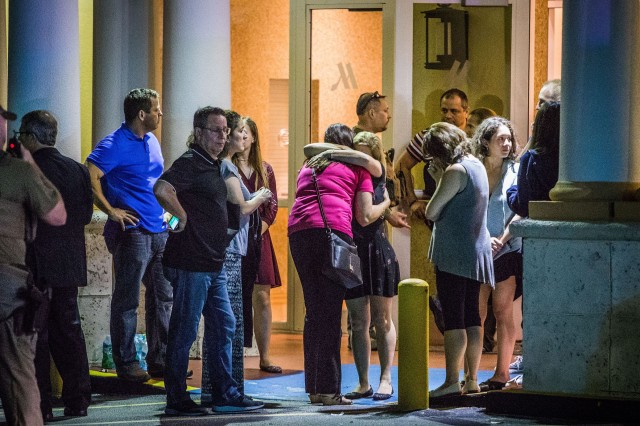
A post about repeat-fire weapons: whether they have any reasonable use or function in civilian hands in a civilised society
It is, of course, prompted by the Florida shooting alleged to be perpetrated by Nikolas Cruz, but not defined by or dependant on this event.
The 2nd Amendment to the United States of America Bill of Rights is well known, yet little understood. Each commentator (and many individual citizens) have their own understanding of the words contained in it. I sense that few have taken time to read the interpretive decision of the Supreme Court in District of Columbia v Heller (June 26 2008), in particular Justice Scalia’s reasoning on behalf of five Justices, and of course the dissenting judgments of four Justices delivered by Justice Stevens and Justice Breyer.
One reason that the decision may be rarely read is that it is interpretive of the ‘apparent historical intention’ of the lawmakers when the Amendment was passed on December 15 1791, making it a challenging read. Justice Scalia was at pains to address its moment of conception, quoting from Robertson v. Baldwin, 165 U. S. 275, 281 (1897):
“…the Second Amendment was not intended to lay down a “novel principle” but rather codified a right “inherited from our English ancestors,” Robertson v. Baldwin, 165 U. S. 275, 281 (1897) – referring to the English Bill of Rights 1689.
Interestingly, with the strictly interpretive approach it is quite irrelevant that the ‘inherited right’ from English law no longer stands to be interpreted in the same way by those from whom the right was inherited. Normalised by former Master of the Rolls, Judge Tom Denning, in contrast to the US Supreme Court, English courts would consider the arguments wisely within an unlimited time-frame, with regard to what Justice Breyer raised as interest-based considerations.
So it seems that the 2nd Amendment is to guarantee an individual ‘right’ to possess and carry weapons in case of confrontation, with some qualification, according to Justice Scalia:
“Like most rights, the right secured by the Second Amendment is not unlimited. From Blackstone through the 19th-century cases, commentators and courts routinely explained that the right was not a right to keep and carry any weapon whatsoever in any manner whatsoever and for whatever purpose…. Although we do not undertake an exhaustive historical analysis today of the full scope of the Second Amendment, nothing in our opinion should be taken to cast doubt on longstanding prohibitions on the possession of firearms by felons and the mentally ill, or laws forbidding the carrying of firearms in sensitive places such as schools and government buildings, or laws imposing conditions and qualifications on the commercial sale of arms”.
The type of weapon is only to be questioned if it falls outside the concept of those available to the founding fathers, so as to be hugely and historically disproportionate to the right – the “dangerous and unusual weapon”. Thus, complex military weapons involving advanced technology would not be permissible. However, repeating and quick-fire weapons are preserved, in that they are deemed to protect ‘an individual right to possess a firearm unconnected with service in a militia, and to use that arm for traditionally lawful purposes, such as self-defense within the home’.
Currently, a plethora of commentators around the world are opining on the topic of gun controls and USA politics and policy. And so do I.
It is said that the state of US gun legislation has little to do with the 2nd Amendment, nor DC v Heller. In part it is the consequence of seeking, in one time frame, to define rights for all time. But it is mainly to do with the will of a legislature, the successors in title to those that passed the 2nd Amendment.
And it is to do with money and culture.

Mandatory Credit: Photo by RMV/Shutterstock (9387190an)
The FBI and police agencies from surrounding counties responded to a mass shooting at Marjory Stoneman Douglas High in Parkland, Florida. Police set up a family staging area for parents to meet their children at the Fort Lauderdale Marriott Coral Springs Hotel to pick up their children
Shooting at Stoneman Douglas High School, Parkland, USA – 14 Feb 2018
Reading social media comments from young Americans who knew the Florida killings perpetrator or victims, or who simply identify with the victims’ plight, I have been amazed at the frequency of comment from those that consider the answer to gun violence – is guns. In particular, automatic repeat-fire weapons.
‘Slippery slope’ arguments jostle with ‘arm the teachers’. Both in my view are fundamentally flawed. What is a ‘slippery slope’ for one commentator is heuristic progress of common sense to another. What is an ‘armed teacher’ for one, is to another, a shot-dead teacher.
Change never happens overnight, but I sense that the tragic events of 14 February 2018 could instigate change of some kind.
What is needed is a ‘sweet spot’ of compromise – presumably where neither proponent gets what they seek, but with which both can live, without the fear of being gunned down by one of their own community. To achieve this, someone has to resolve that automatic and quick fire weapons have no place in normal times, in public places, in civilised countries in the hands of civilians.
Whilst an advert may appear at the foot, this blog is neither monetarised, nor endorsing any product
Genuine bottom-up movement led by the young, or youth manipulated by an anti-gun lobby? Time will tell, but the NRA appear to focus on personal attacks rather than letting the arguments surface. https://www.theguardian.com/us-news/2018/feb/20/how-rightwing-media-is-already-attacking-florida-teens-speaking-out